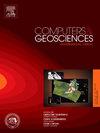Automatic seismic event detection in low signal-to-noise ratio seismic signal based on a deep residual shrinkage network
IF 4.4
2区 地球科学
Q1 COMPUTER SCIENCE, INTERDISCIPLINARY APPLICATIONS
引用次数: 0
Abstract
Seismic event detection is a basic and crucial task in seismic data processing. With the gradual increase in seismic observation data, how to detect seismic events from seismic records automatically and accurately has become an urgent problem. However, due to the complexity and variability of the seismic observation environment, acquired seismic records are always accompanied by various noises, compromising detection accuracy. Considering the different noises contained in seismic records acquired by different seismic sensors, herein, a deep residual shrinkage network (DRSN) was constructed to detect seismic events in low signal-to-noise ratio (SNR) seismic records. To test the performance of our model, two types of experiments were conducted. Results demonstrated that the DRSN uses a soft thresholding function to eliminate noise interference while retaining effective signal features; it also introduces an attention mechanism to enhance the focus on significant features and adaptively adjusts the denoising threshold. Consequently, the DRSN effectively eliminates the effect of different noises on seismic event recognition according to the characteristics of different signals, thereby resulting in good overall performance. In detecting the Stanford earthquake dataset and microseismic signals, the DRSN achieved accuracies of 99.08% and 95.43%, respectively, outperforming the short-term average over long-term average, convolutional neural network, earthquake transformer, and sequential attention network. The DRSN can be applied to the automatic and accurate detection of seismic events, especially under low SNR conditions, such as for microseismic signals. Moreover, the DRSN requires no manual setting of the optimal denoising threshold, making the model operable and universal.
基于深度残差收缩网络的低信噪比地震事件自动检测
地震事件检测是地震资料处理的一项基础和关键工作。随着地震观测资料的逐渐增加,如何从地震记录中自动准确地检测地震事件已成为一个迫切需要解决的问题。然而,由于地震观测环境的复杂性和多变性,获取的地震记录往往伴随着各种噪声,影响了探测精度。考虑到不同地震传感器采集的地震记录中含有不同的噪声,构建了深度残余收缩网络(deep residual shrinkage network, DRSN),用于低信噪比地震记录中的地震事件检测。为了验证模型的性能,我们进行了两类实验。结果表明,DRSN采用软阈值函数消除了噪声干扰,同时保留了有效的信号特征;该算法还引入了注意机制来增强对重要特征的关注,并自适应调整去噪阈值。因此,根据不同信号的特点,有效地消除了不同噪声对地震事件识别的影响,从而获得了较好的综合性能。在斯坦福地震数据集和微震信号的检测中,DRSN的准确率分别达到99.08%和95.43%,优于短期平均值、长期平均值、卷积神经网络、地震变压器和顺序关注网络。DRSN可用于地震事件的自动准确探测,特别是在低信噪比条件下,如微震信号。此外,DRSN不需要手动设置最优去噪阈值,使模型具有可操作性和通用性。
本文章由计算机程序翻译,如有差异,请以英文原文为准。
求助全文
约1分钟内获得全文
求助全文
来源期刊

Computers & Geosciences
地学-地球科学综合
CiteScore
9.30
自引率
6.80%
发文量
164
审稿时长
3.4 months
期刊介绍:
Computers & Geosciences publishes high impact, original research at the interface between Computer Sciences and Geosciences. Publications should apply modern computer science paradigms, whether computational or informatics-based, to address problems in the geosciences.
 求助内容:
求助内容: 应助结果提醒方式:
应助结果提醒方式:


